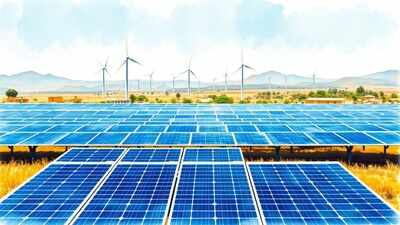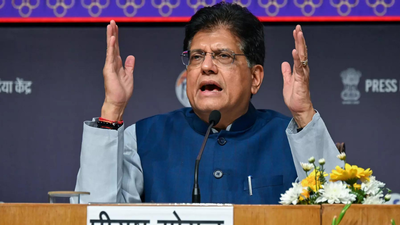Renewable energy surge: India’s non-fossil fuel power capacity to touch 300 GW soon; 40 GW projects in advanced stages

India’s non-fossil fuel-based power generation capacity is set to reach around 300 gigawatts (GW) soon, with over 40 GW of renewable energy projects in advanced stages of signing power purchase agreements (PPAs) and securing transmission connectivity, the ministry of new and renewable energy (MNRE) said on Wednesday.As of September 30, India’s non-fossil fuel capacity stood at 256 GW, including 50 GW of large hydro and 8.78 GW of nuclear power. The additional projects under finalisation are expected to push capacity closer to 300 GW, supporting the country’s broader target of 500 GW of renewable energy by 2030, the ministry added.“India’s renewable growth remains among the fastest in the world, driven by multi-pathway expansion. Over 40 GW of awarded renewable projects are presently in advanced stages of securing PPAs, PSAs, or transmission connectivity,” MNRE said, highlighting that capacity addition is progressing not only through Central Renewable Energy Implementing Agencies (REIAs) but also via state agencies and commercial and industrial consumers. In 2025, REIAs conducted bids for 5.6 GW, while state agencies carried out bidding for 3.5 GW, and nearly 6 GW is expected from industrial consumers.The ministry noted that India continues to add 15–25 GW of renewable capacity annually, maintaining one of the fastest growth rates globally despite global challenges such as supply-chain disruptions, fluctuating module prices, and tighter financing conditions. Domestic manufacturing incentives, including the production-linked incentive (PLI) scheme and duties on imports, are further reducing import dependency and strengthening industrial depth.To ensure an uninterrupted power supply, MNRE is expanding inter-regional transmission capacity through High-Voltage Direct Current (HVDC) corridors, planning to increase transmission from 120 GW today to 143 GW by 2027 and 168 GW by 2032, reported news agency PTI.As per a recent report by S&P Global Ratings, India continues to outpace its South and Southeast Asian peers in renewable capacity additions, benefiting from low-cost renewables, a competitive bidding framework, supportive regulatory policies, growing storage tenders, and strong private sector funding. The report also noted that India added 35 GW of renewable capacity in the first nine months of 2025, keeping it on track to meet its annual targets.“With a combination of supportive policies, multi-pathway execution, and robust funding, India is leading the region in renewables growth while advancing towards its 2030 energy transition commitments,” the S&P report concluded.






